Fifty years of
la Rinascente’s history in its House Organ’s pages

1 — Cronache la Rinascente-Upim, a. XIV, n. 22, 1960
La Rinascente was among one of the first Italian companies to understand the importance of the in-house company publication as a tool to inform, unite and educate the employee community, as well as to act as a visual record of their daily working life.
Anni '20
The “Bullettino interno”’s (The In-house Bulletin) publication was initiated by the new Borletti ownership in September 1920, during the Biennio Rosso (Two Red Years), with the moral purpose of establishing the greatest cohesion possible between the company and its workers, to the extent that Filippo Turati was quoted on its front page: “Innumerable are the interests of workers […] that correspond with those of their respective companies, and these interests are instantly in harmony with the nation’s civility.”

2 — “La Rinascente. Bullettino interno”, a. I, n. 1, settembre 1920
The house organ’s target readership was not only workers, but also the wider audience of customers. Because of this, from its very beginnings, the publication helped to craft the company’s public image, whose “wide-ranging mission” was precisely outlined in an article by Giovanni Pioli: “the la Rinascente stores will in fact be a National Permanent Exhibition […] to refine the tastes of the public who enter its doors”.
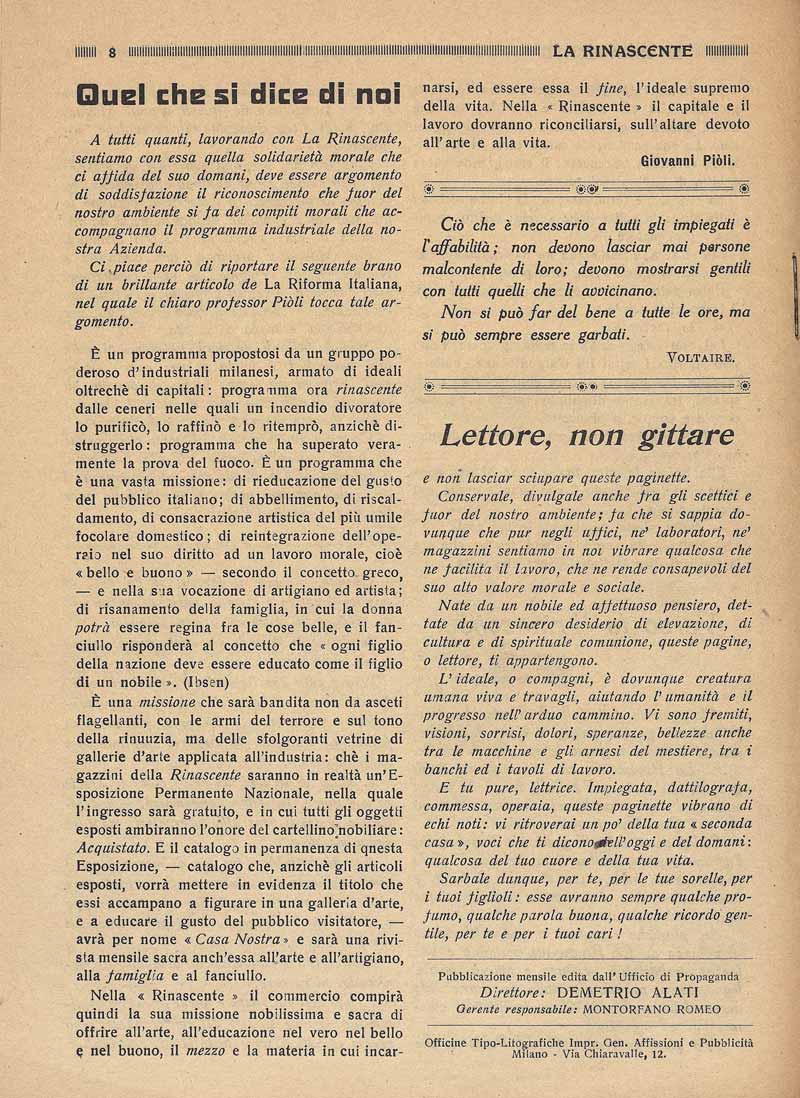
3 — “La Rinascente. Bullettino interno”, a. I, n. 1, settembre 1920
In September 1920, la Rinascente founded a company sports association with the intent once again to promote social cohesion and to prove that it was responsive to the rise of new social phenomena, such as the emergence of workers’ free time, and the resulting spread of sports being practiced and stays in holiday resorts. From then on, the association’s activities would be heavily featured on the pages of the “Bullettino interno”.

4 — “La Rinascente. Bullettino interno”, a. I, n. 2, ottobre 1920

5 — “La Rinascente. Bullettino interno”, a. I, n. 3-4, novembre-dicembre 1920
Completing its staff programme, la Rinascente’s top management saw to establish a mutual assistance association, general education and technical schools, and last but not least, an on-site restaurant. All of these projects’ activities were documented in the company’s in-house publication for over half a century.
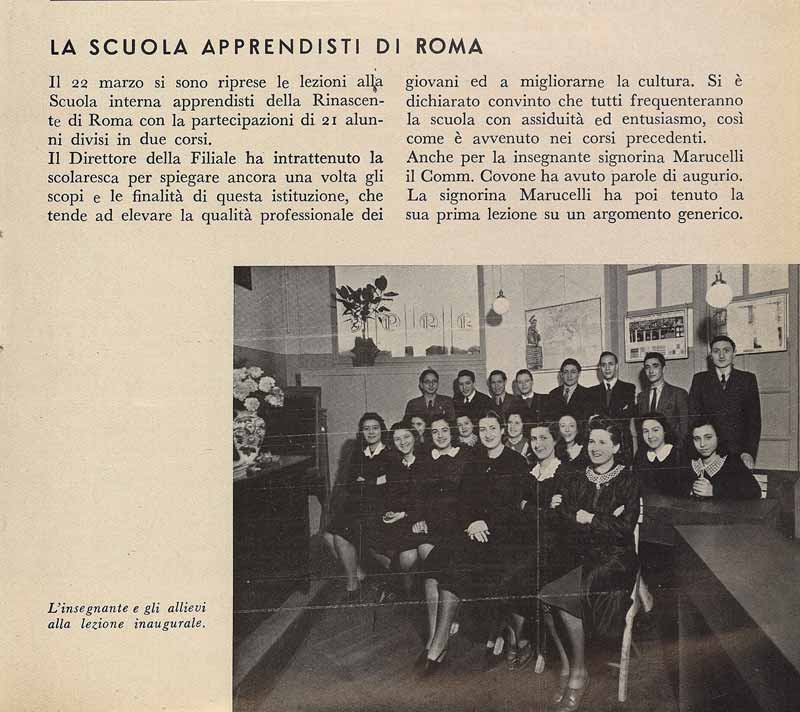
6 — “La Famiglia Rinascente-Upim”, a. VII, n. 2, aprile 1941
In February 1929, in the midst of a new political climate, Umberto Brustio announced the creation of a new magazine “Echi de la Rinascente” (Echoes of la Rinascente), headed by Mario Luporini. The magazine acted as the voice of a second phase in company-employee relations, characterised by a complete trust in the scientific management of labour, that was sought to also be applied in the retail sector.
The articles published in the magazine were about sales, the department store’s history, and fashion.
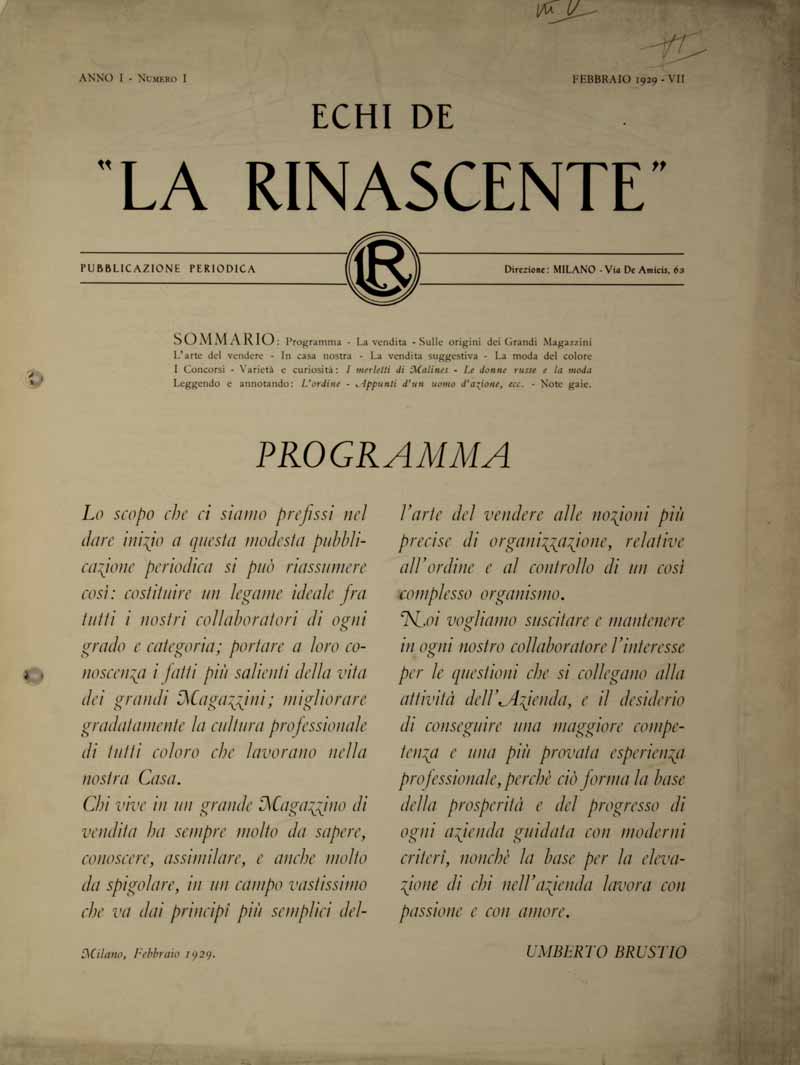
7 — “Echi de la Rinascente”, a. I, n. 1, febbraio 1929
Anni '30
This stance of complete trust in the prospect of outlining the principles for a “sales science” was however not successful, and in 1935 “La Famiglia Rinascente-Upim” (the la Rinascente-Upim Family) was released that, signalling a return to its roots, reintroduced many of the subjects raised in the “Bullettino” in order to strengthen a sense of belonging among the employees of the company.
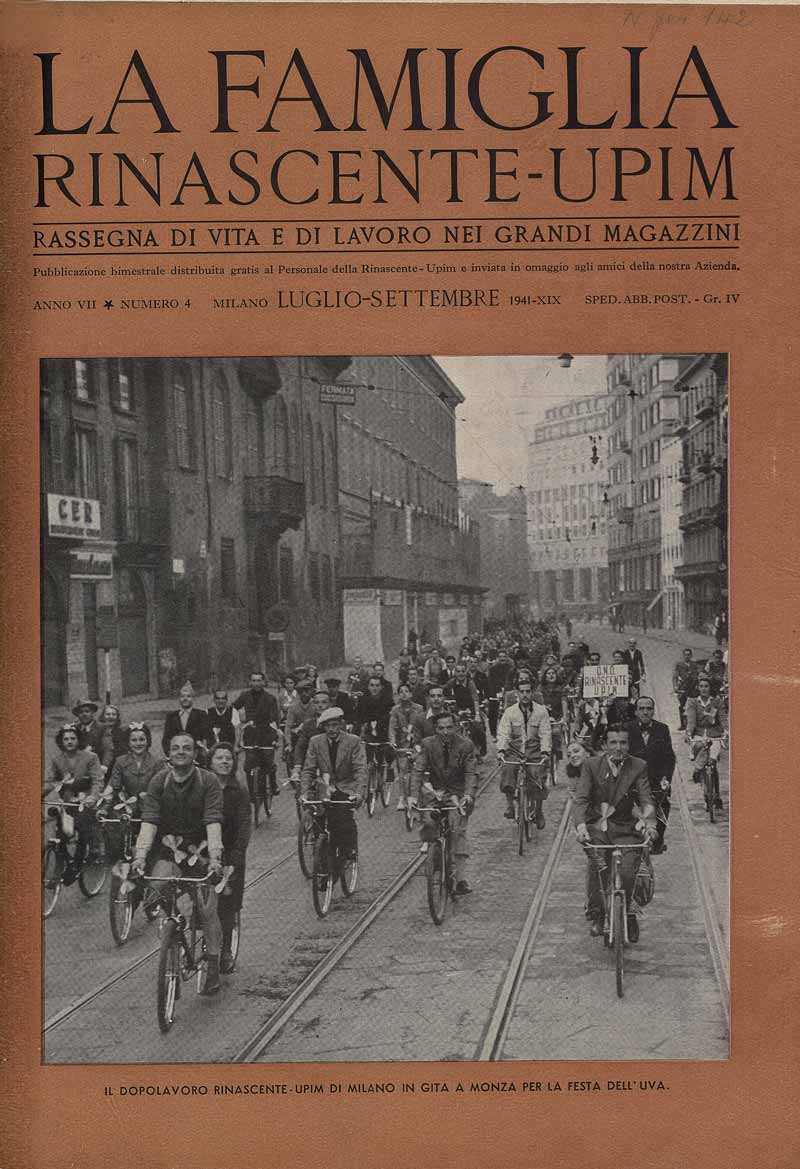
8 — “La Famiglia Rinascente-Upim”, a. VII, n. 4, luglio-settembre 1941
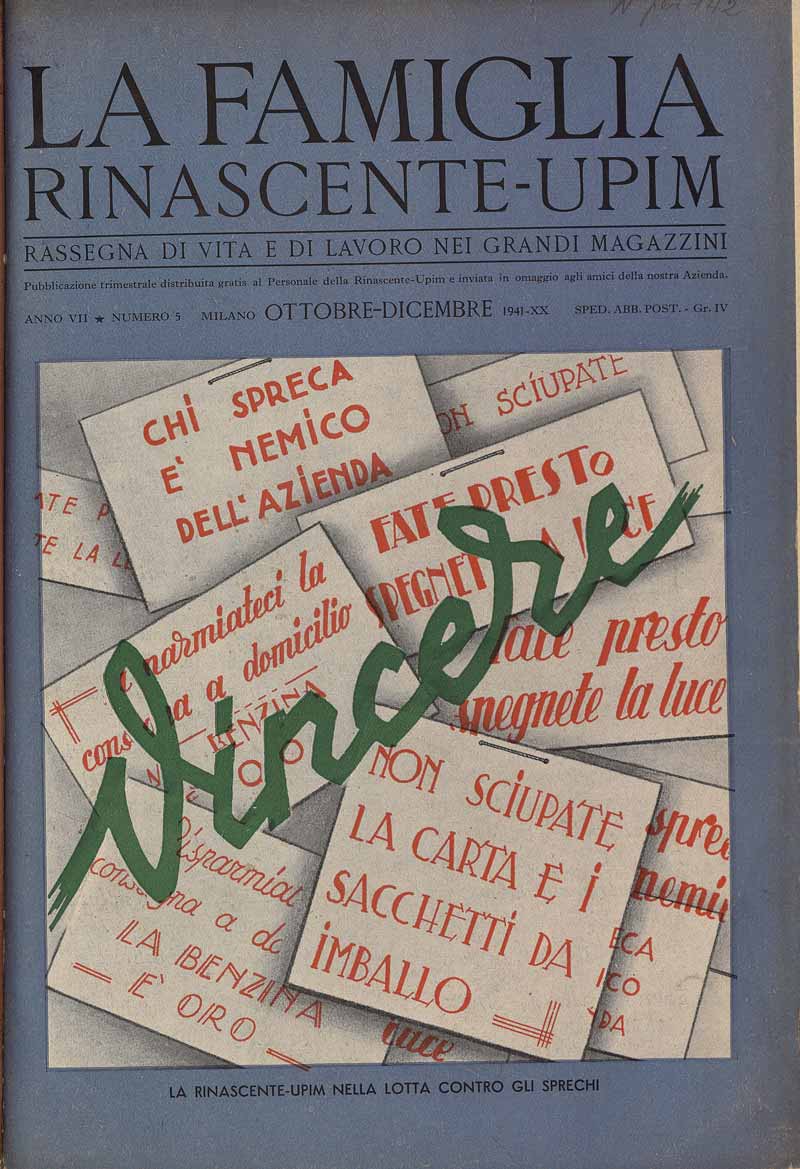
9 — “La Famiglia Rinascente-Upim”, a. VII, n. 5, ottobre-dicembre 1941
In Spring 1930, la Rinascente launched a new publication, “Mondo Bambino” (Children’s World), a magazine released every two months that was headed by Antonio Rubino, for “la Rinascente’s little friends”. “Mondo Bambino” was dedicated to the younger readers, being fully illustrated in colour and bursting with comic strips, stories, games, and even featured prize competitions and some pages dedicated to advertising clothing for children.
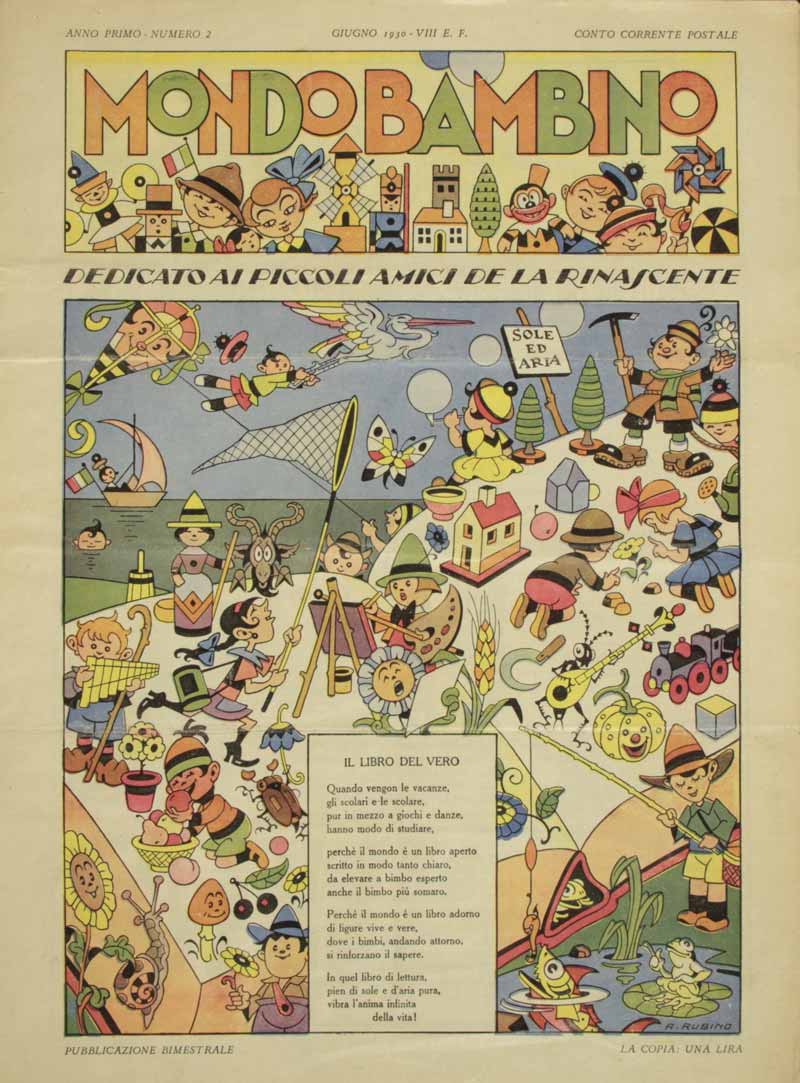
10 — “Mondo Bambino”, a. I, n. 2, giugno 1930
Anni '40
In August 1943, bombardments struck la Rinascente’s most prestigious stores, including the Milan store, forcing the company to suspend publication of the magazine, that would later resume in January 1947 with the first issue of “Cronache della Rinascente-Upim. Rassegna di vita e di lavoro nei grandi magazzini” (Rinascente-Upim Chronicles: A showcase of the life and work in the department stores).
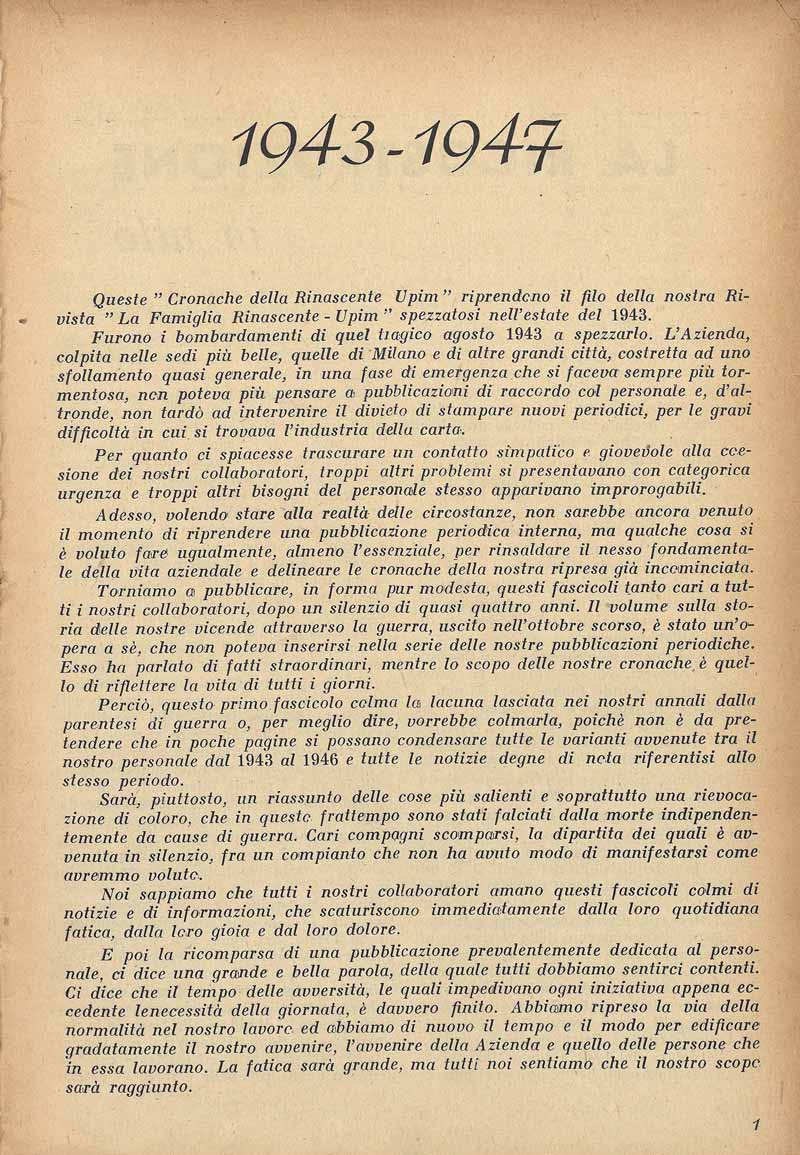
11 — “Cronache della Rinascente-Upim”,
a. I, n. 1, gennaio-marzo 1947
Occupying a large space in the pages of the periodical were accounts of the goings-on in the company, the main meetings, the reconstruction of the buildings destroyed during the war, and the opening of new la Rinascente and Upim stores. The periodical celebrated the company’s loyal workforce, and announced promotions, joyful family news such as marriages and births, but also sadder announcements including deaths. National training, recreational, sporting, and entertainment activities were also detailed in the publication, and were reorganised from 1955 into the new Circolo Rinascente-Upim, whose Milan headquarters were based in the rooms of Palazzo Durini.
A great deal of focus was placed on the theme of solidarity, interpreted as a social service provided to employees.
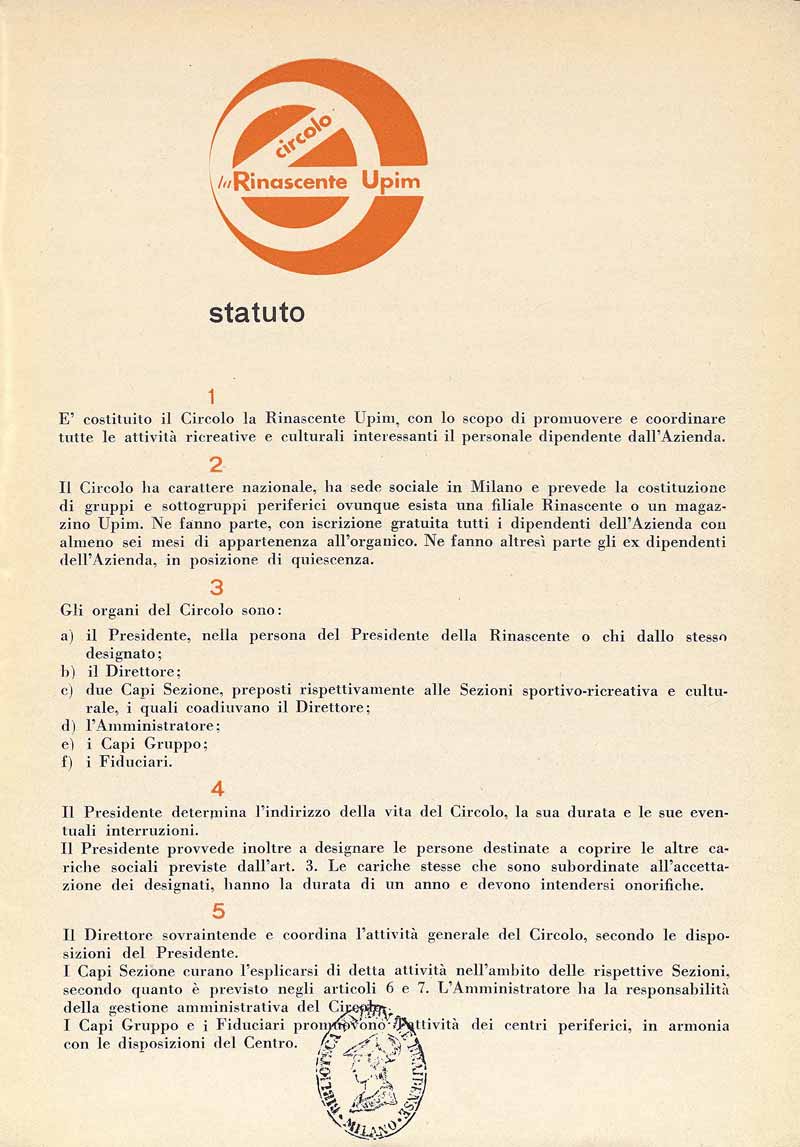

12/13 — “Cronache la Rinascente-Upim”, a. X, n. 1, 1955
Shop assistants attended a countless number of further training sessions to learn and to keep their skills up to date. Articles from the la Rinascente che non si vede (The unseen la Rinascente) series proved to be of great interest, whose purpose was to show the aspects of the company that the public did not know about and that well describe, even today, the organisation and the development strategy implemented by top management.

14 — “La Famiglia Rinascente-Upim”, a. VII, n. 3, giugno 1941
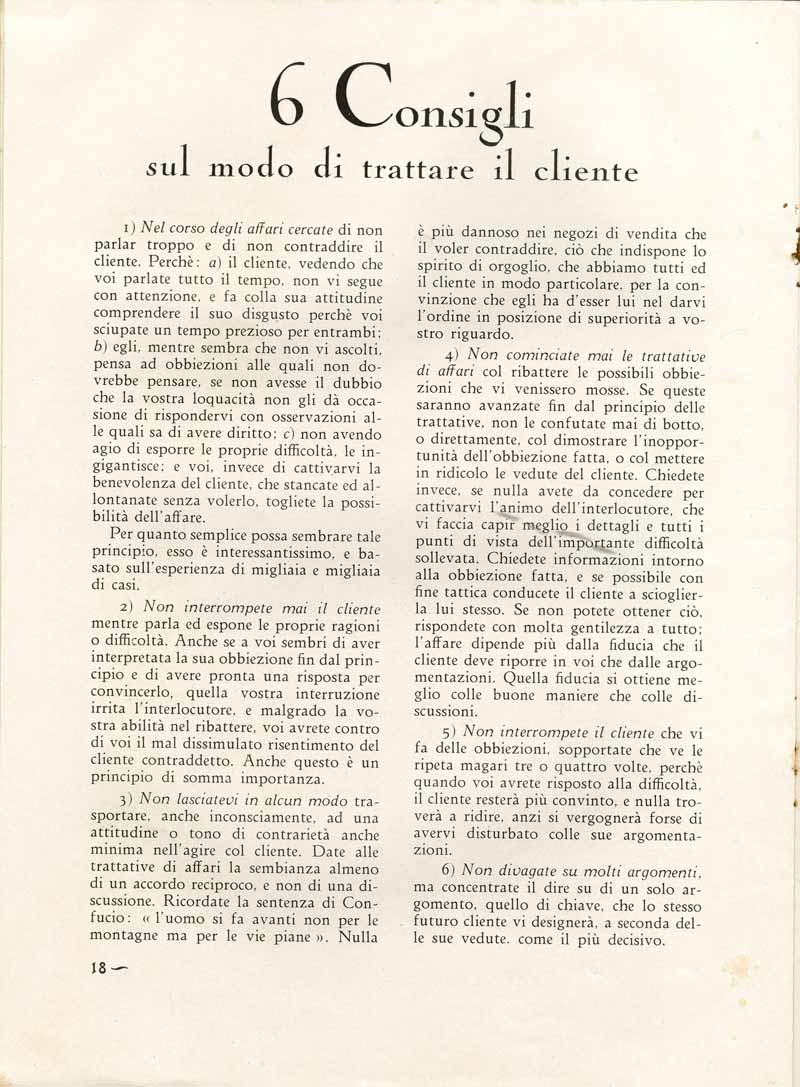
15 — “Echi de la Rinascente”, a. II, n. 1, aprile 1930
The fashion features, which had been included since the very beginnings of the magazine, as well as during the wartime years, were always one of the most popular, even among articles that were targeted towards a wider readership, accompanied by illustrations and, from 1948, by photographs.
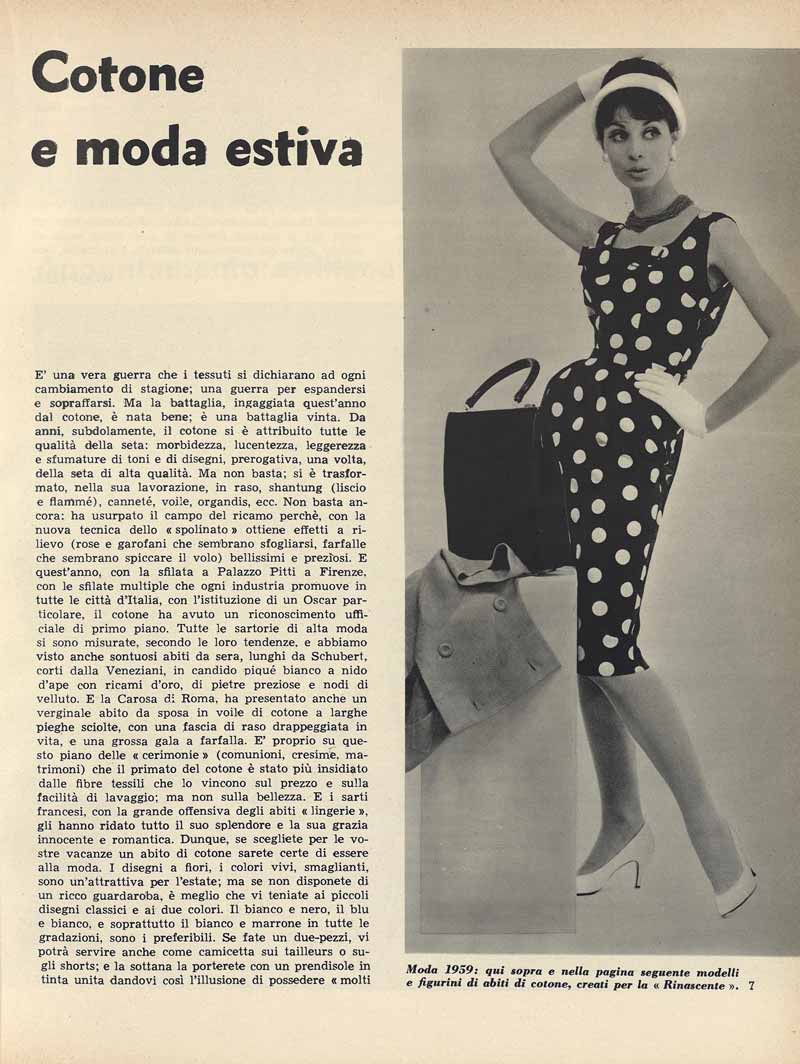
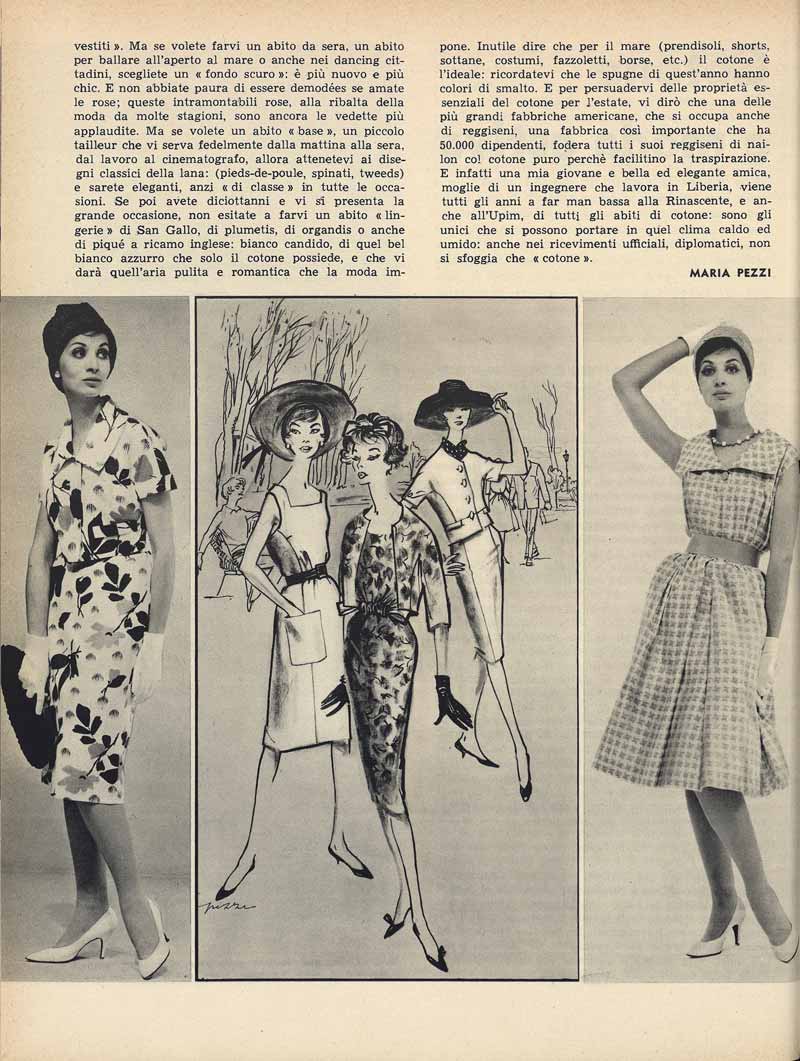
16/17 — Maria Pezzi, Cotone e moda estiva, in “Cronache la Rinascente-Upim”, a. VI, n. 13, 1959
Some of the most renowned Italian fashion journalists put themselves to the test by writing for the magazine, including Silvana Bernasconi, Maria Pezzi, Brunetta Mateldi, Elena Melik, Rachele
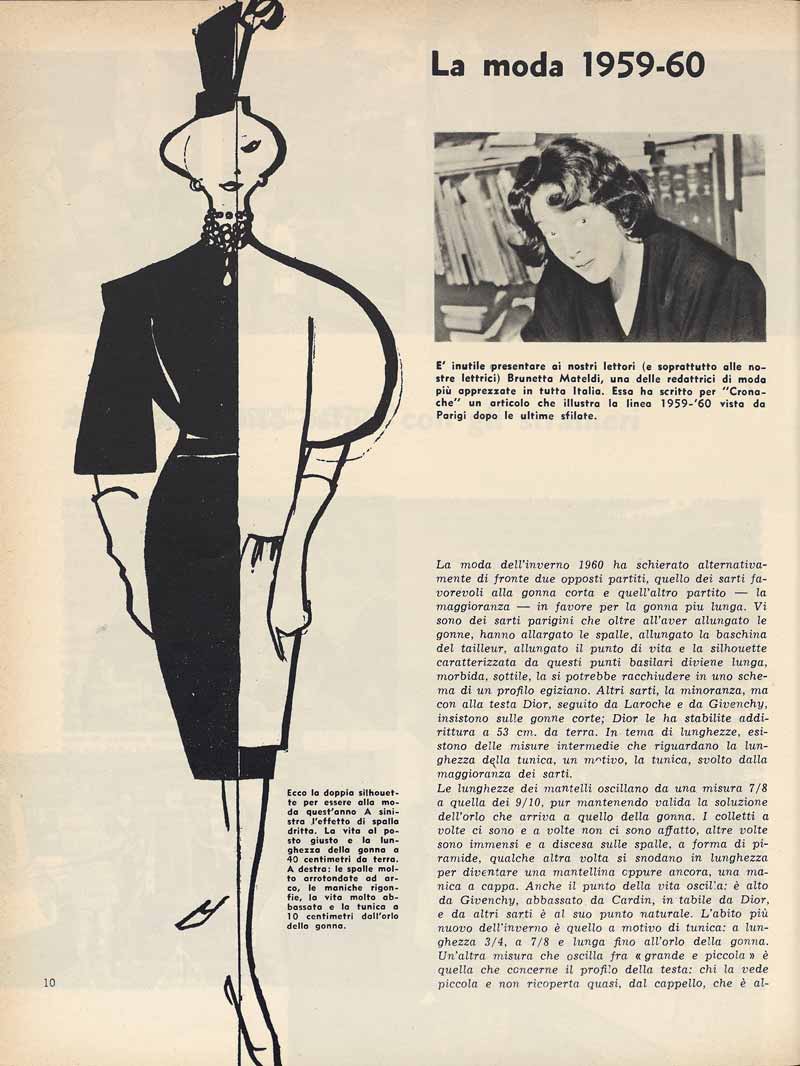

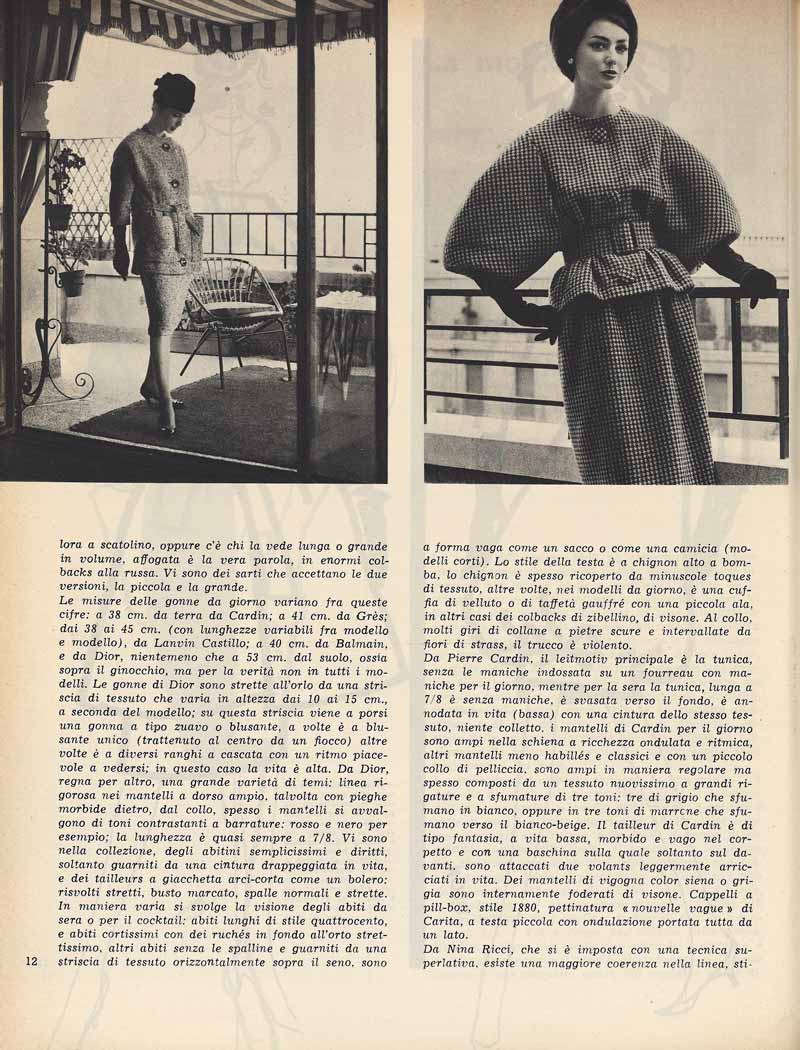
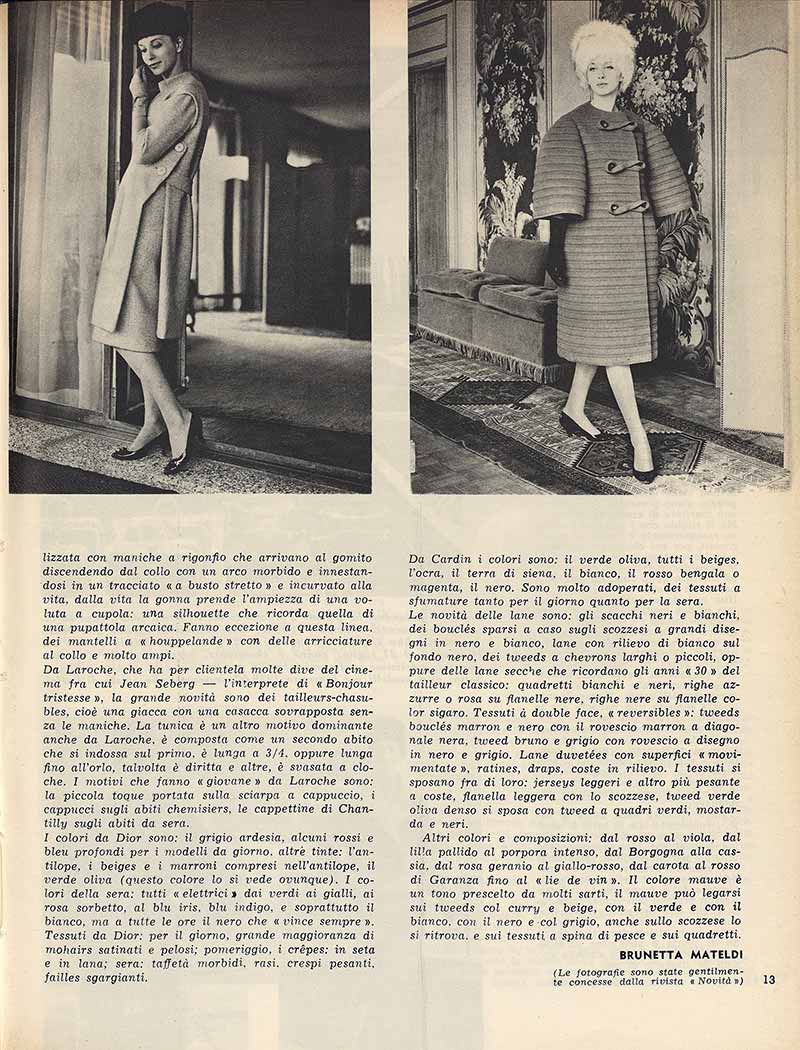
18/19/20/21 — Brunetta Meteldi, La moda 1959-60, in “Cronache la Rinascente-Upim”, a. XII, n.15, 1959
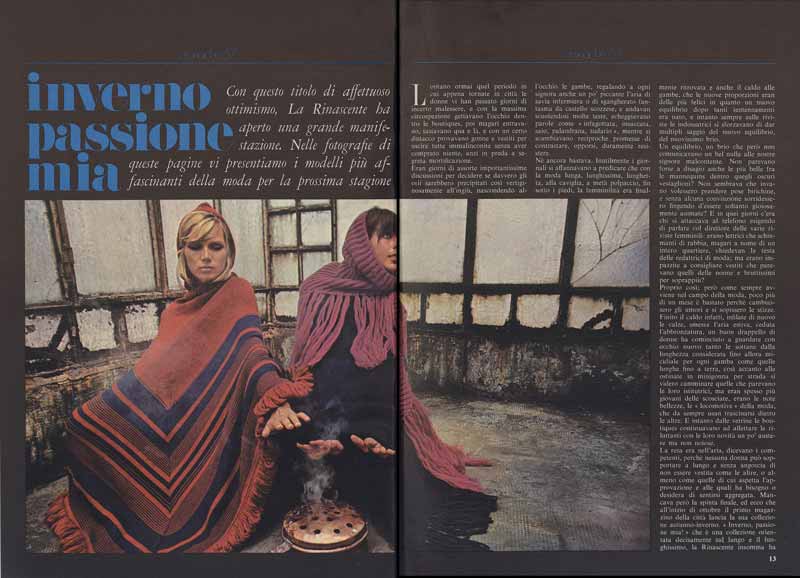

22/23 — Camilla Cederna, Inverno passione mia, “Cronache gruppo la Rinascente”, a. XXIII, n. 57, 1970
Natalia Aspesi wrote social commentary articles, including Profili di casa nostra: il cliente (Profiles from our house: the client) and Vi racconto tutto quello che ho visto al sud (I’ll tell you about everything I saw in the south), as well as articles about the transforming role of women in society: Un personaggio del nostro tempo: la donna gerente (A figure of our time: the female manager).

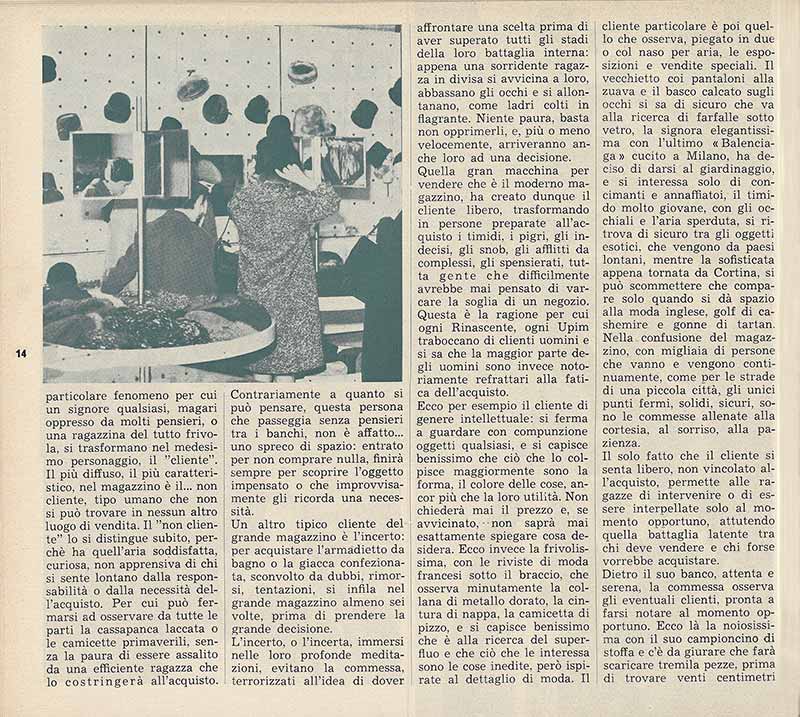
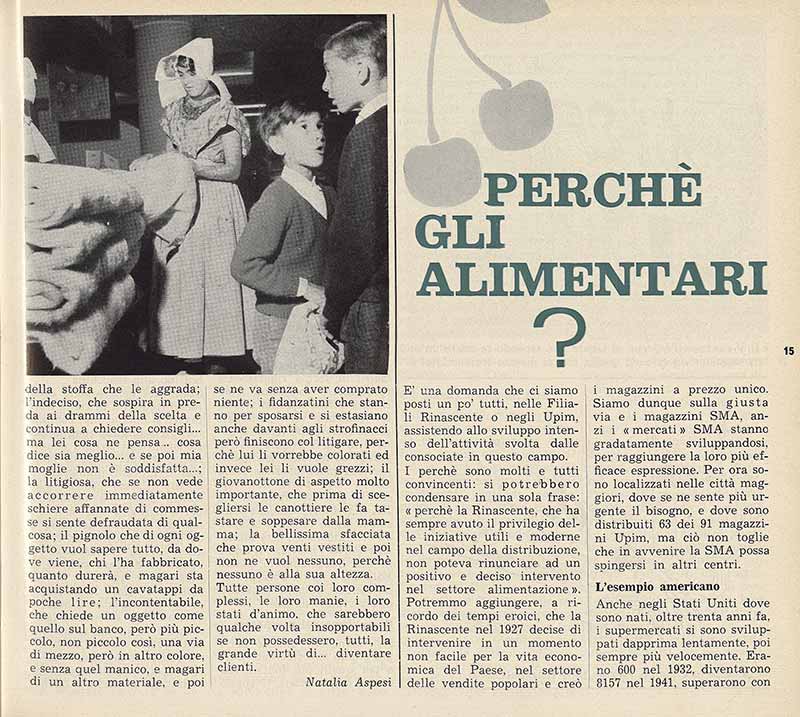
24/25/26 — Natalia Aspesi, Profili di casa nostra: il cliente, a. XIII, n. 17, 1959
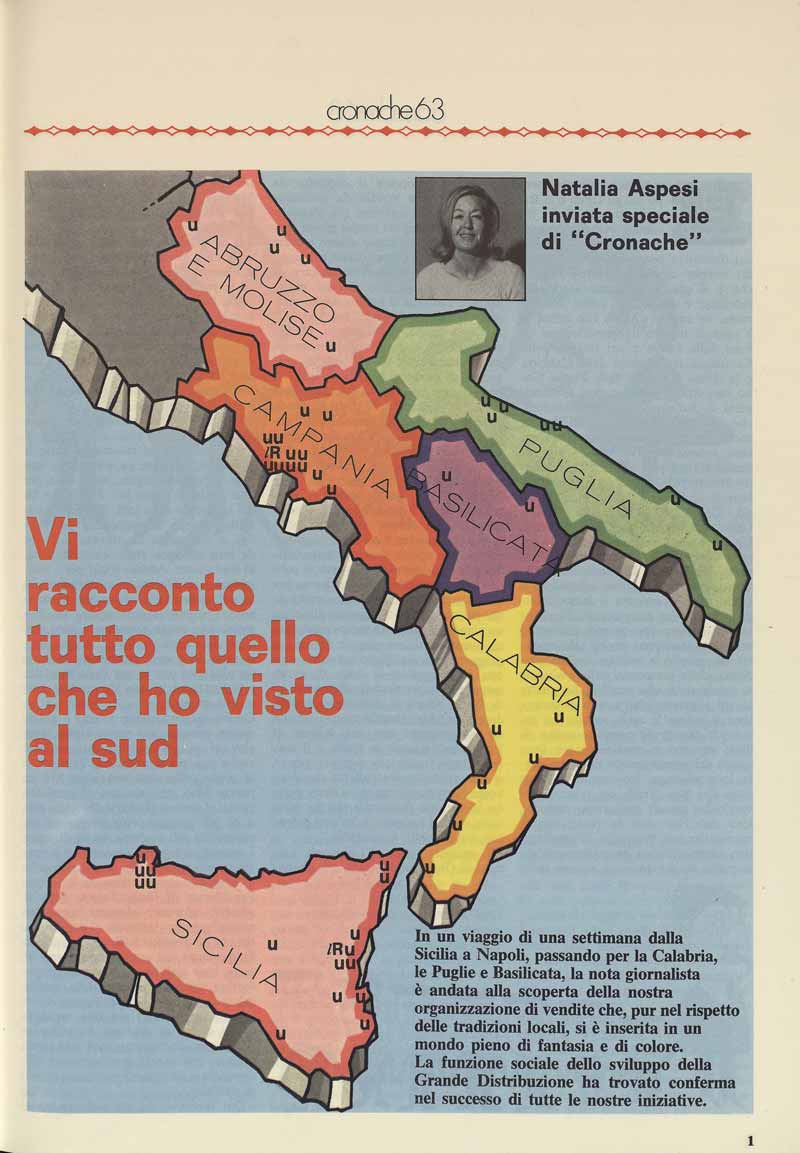
27 — Natalia Aspesi, Vi racconto tutto quello che ho visto al sud, in “Cronache gruppo la Rinascente”, a. XXIV, n. 63, 1971
One of the great authors who collaborated with the magazine was Eugenio Montale, who in May 1956 wrote Fiori a Brera (Flowers at Brera), an article about a flower show sponsored by la Rinascente at Milan’s famed art gallery, in order to raise awareness of the exhibition among the public.
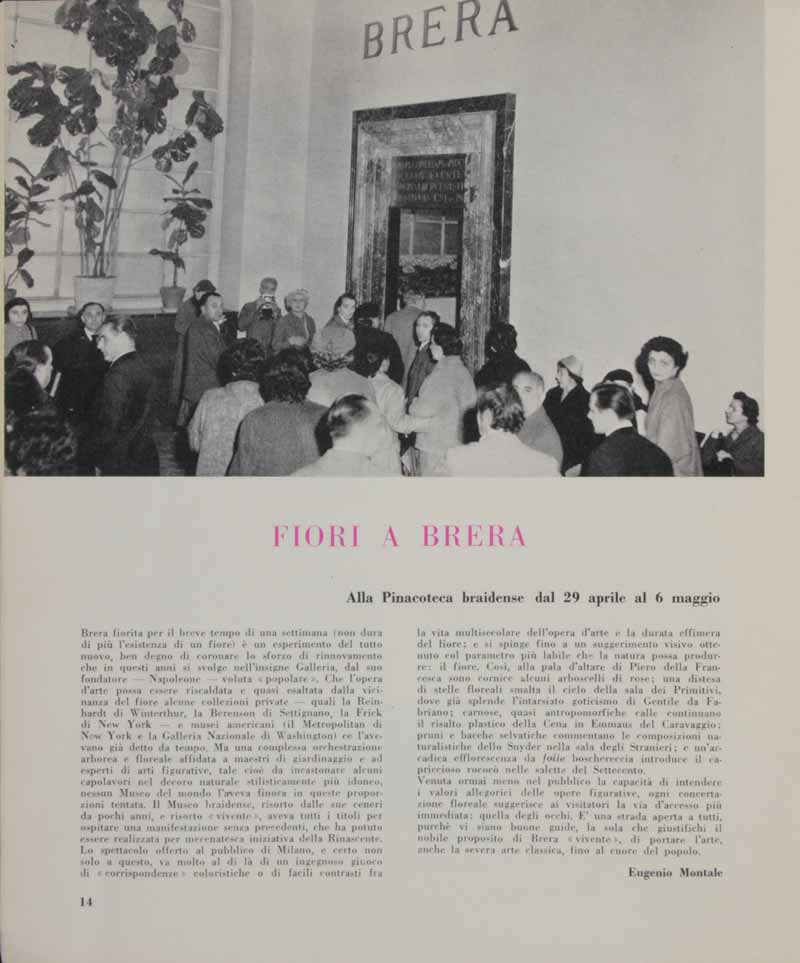
28 — Eugenio Montale,
Fiori a Brera, in “Cronache la Rinascente-Upim”, a. IX, n. 2, 1956
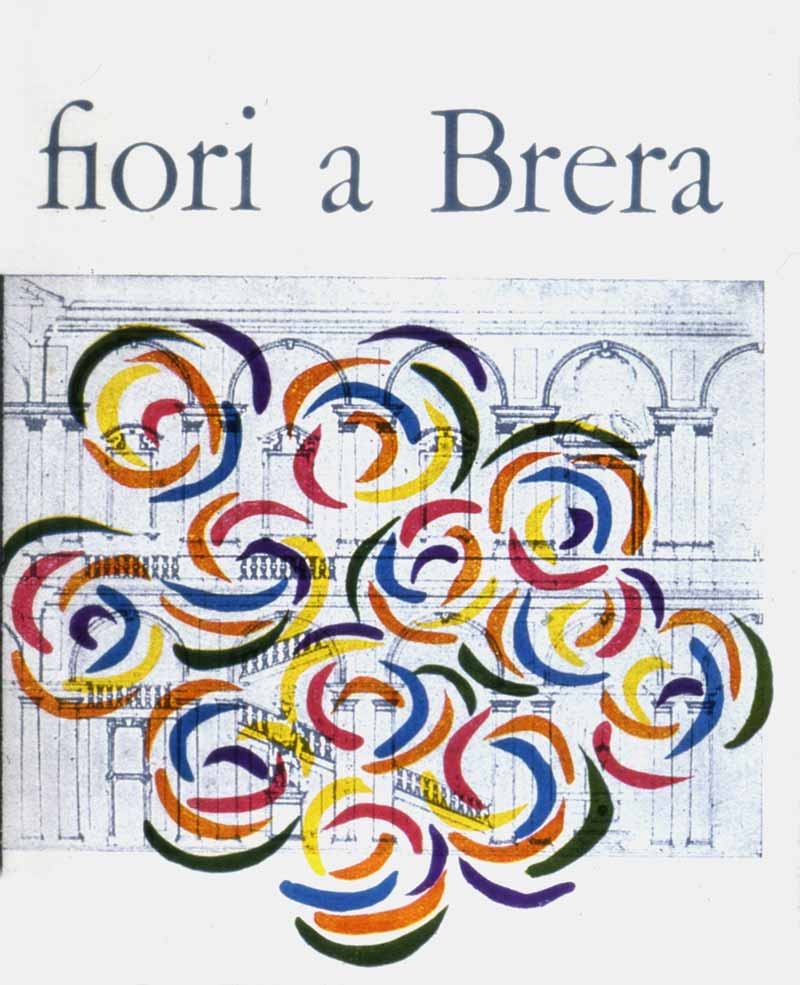
29 — Roberto Sambonet,
Fiori a Brera, manifesto, 1956
Anni '50
In the mid-1950s, la Rinascente experienced a period of outstanding creativity and incredible buzz, that dramatically changed its image to bring it onto the international stage. Alongside recurring events that were held every season, la Rinascente promoted a project of great standing, the brainchild of Gio Ponti and Alberto Rosselli, which was fated to have a long-lasting success: the Compasso d’Oro Award for product aesthetics, that celebrated the leading position Italian design held in the world.

30 — “Cronache la Rinascente-Upim”, a. IX, n. 4, dicembre 1954

31 — “Cronache la Rinascente-Upim”, a. IX, n. 1, aprile 1954
Major events, that were simultaneously commercial and cultural in nature, followed and were housed in the la Rinascente Duomo store that showcased the products, habits and customs of a number of European countries and some outside the continent. The first country exhibited was Spain, followed by Japan, the United States, the United Kingdom, India, Thailand, Mexico, and many others.
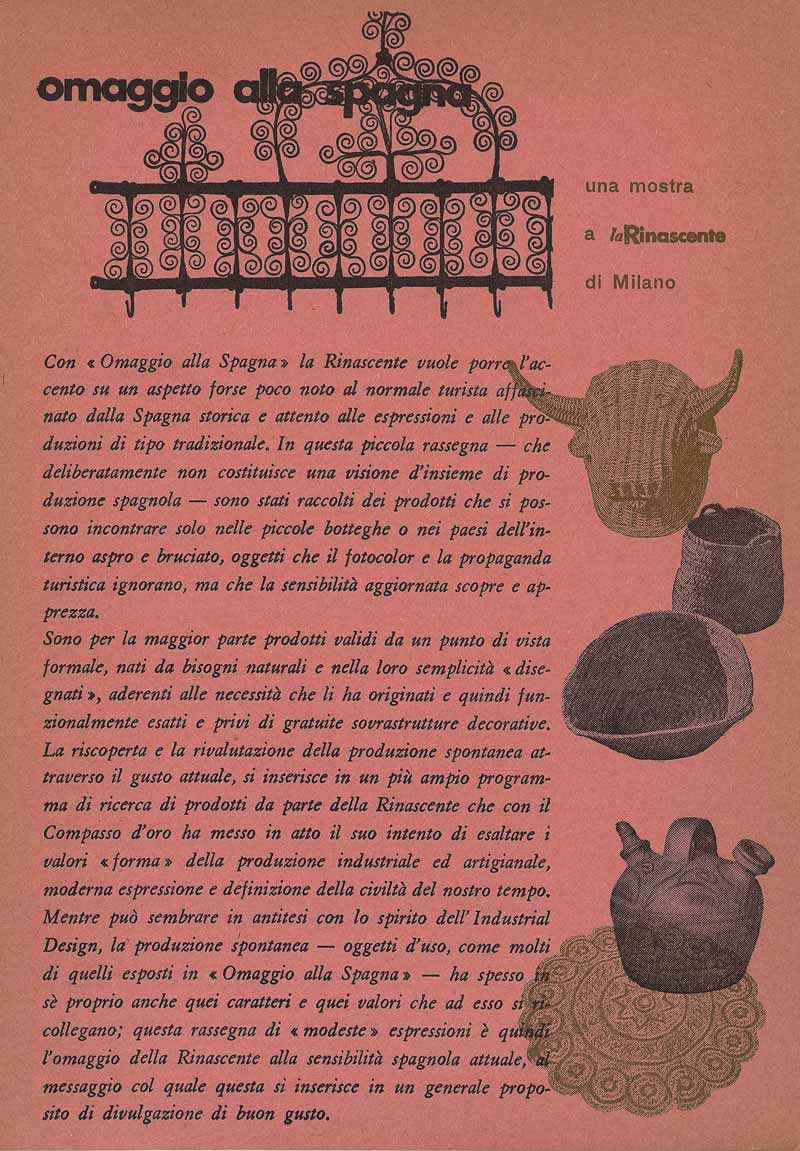

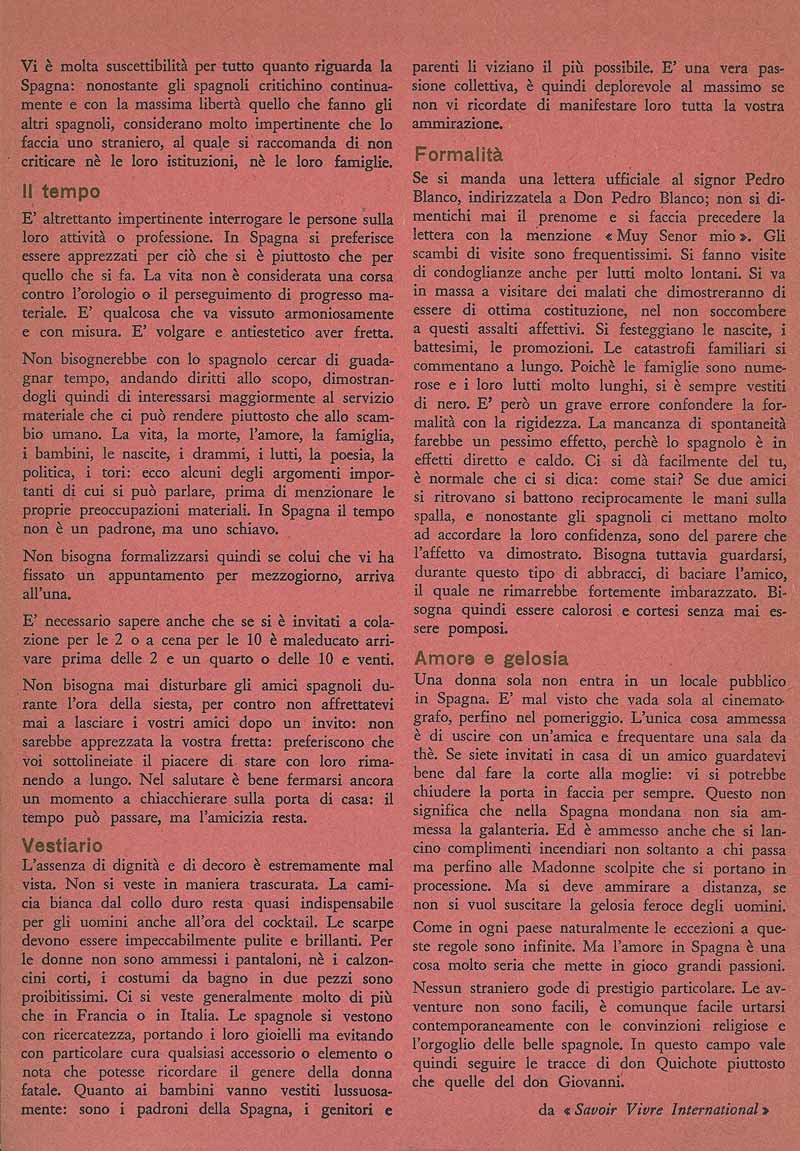
32/33/34 — “Cronache la Rinascente-Upim”, a. X, n. 2, giugno 1955
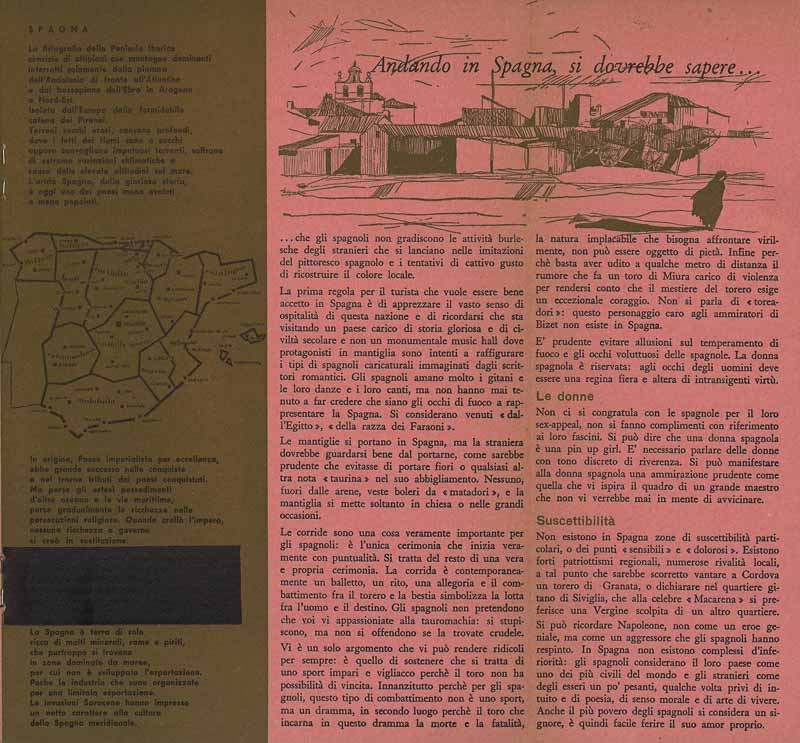
35 — “Cronache la Rinascente-Upim”, a. X, n. 2, giugno 1955
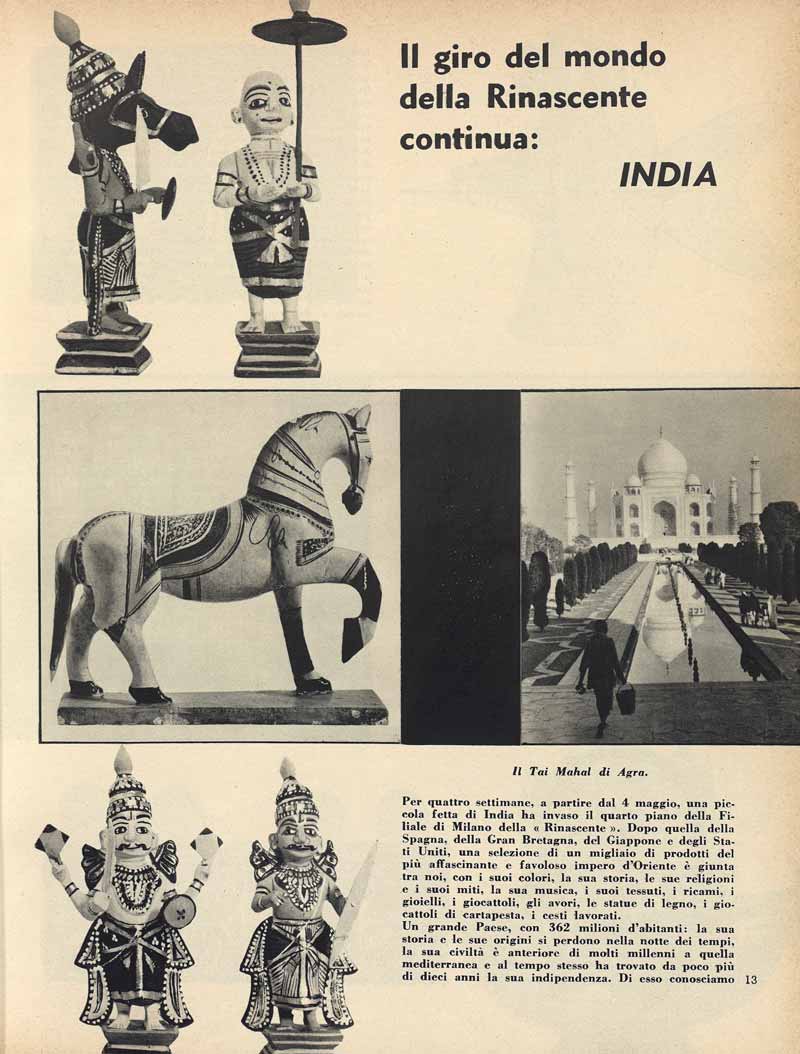
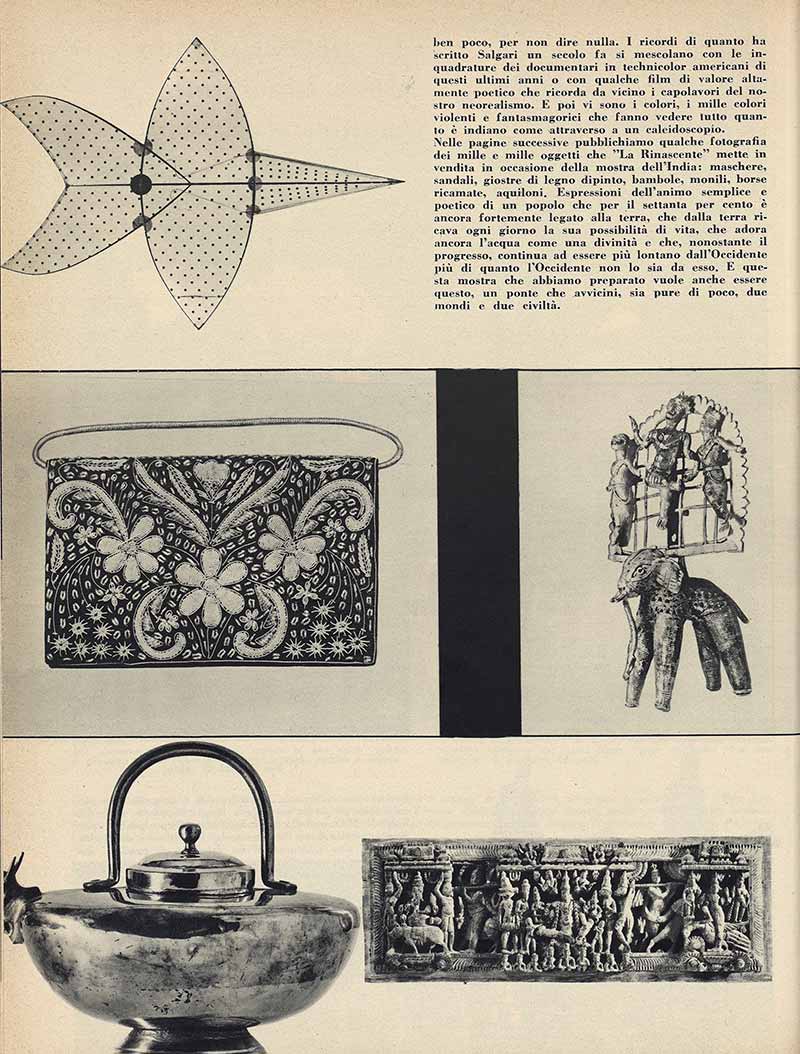

36/37/38 — “Cronache la Rinascente-Upim”, a. XII, n. 13, giugno 1959
An integral element of the company’s advertising, the “Cronache” were also given a completely fresh style that resulted in a complete overhaul in both form and content.
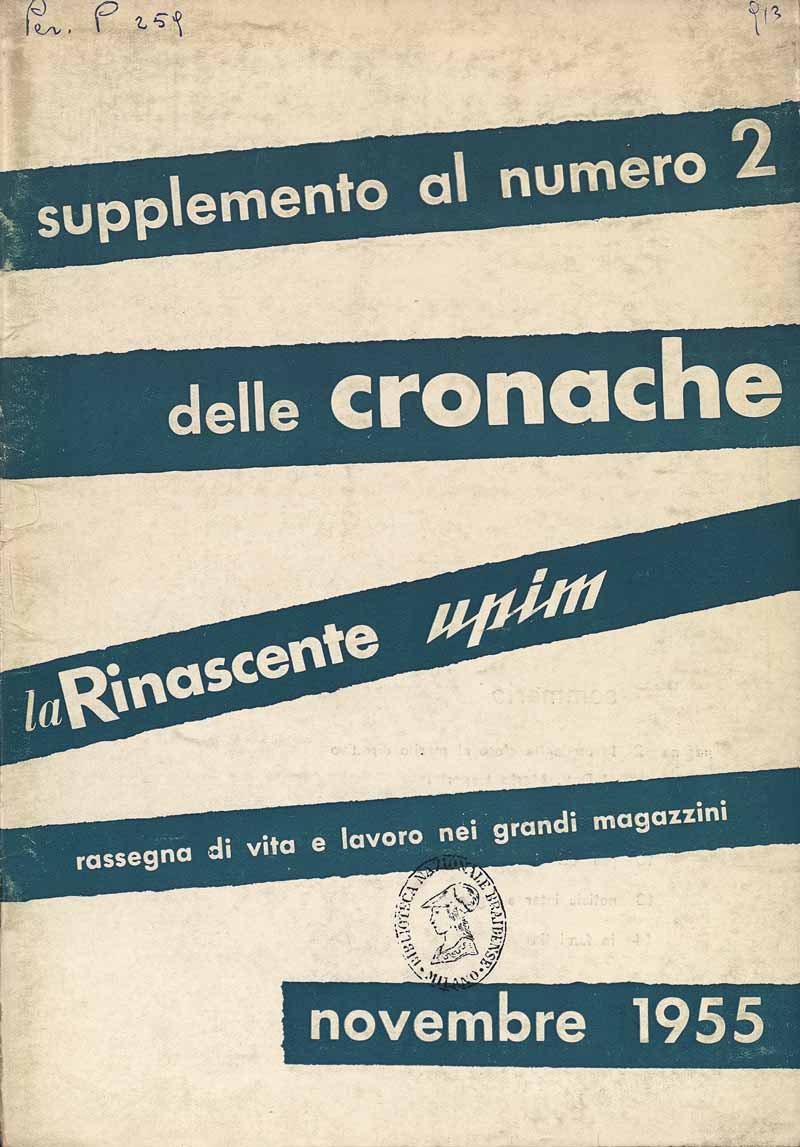
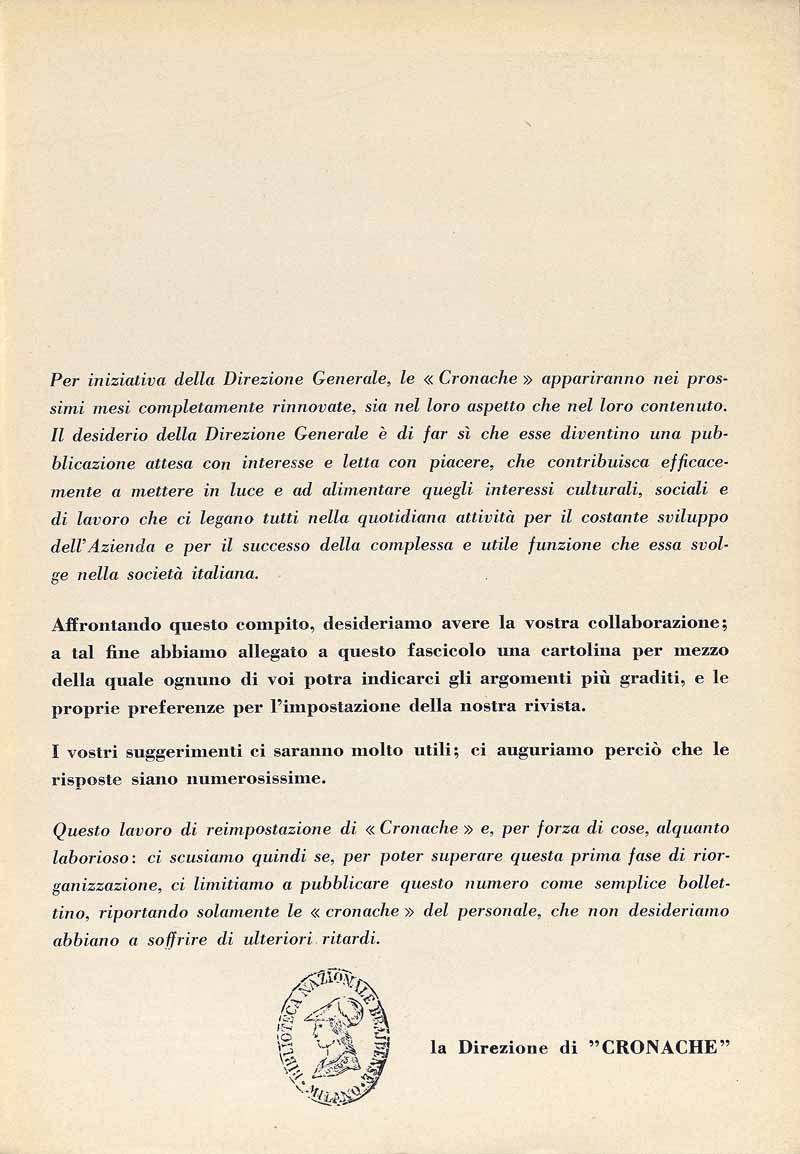
39/40 — “Supplemento al n.2 delle Cronache la Rinascente-Upim”, novembre 1955
Anni '60 e '70
In the early 1970s, the group made it their goal to increase their target customer range, setting their sights on young people. For this age group, products lines, events and targeted advertising were created.
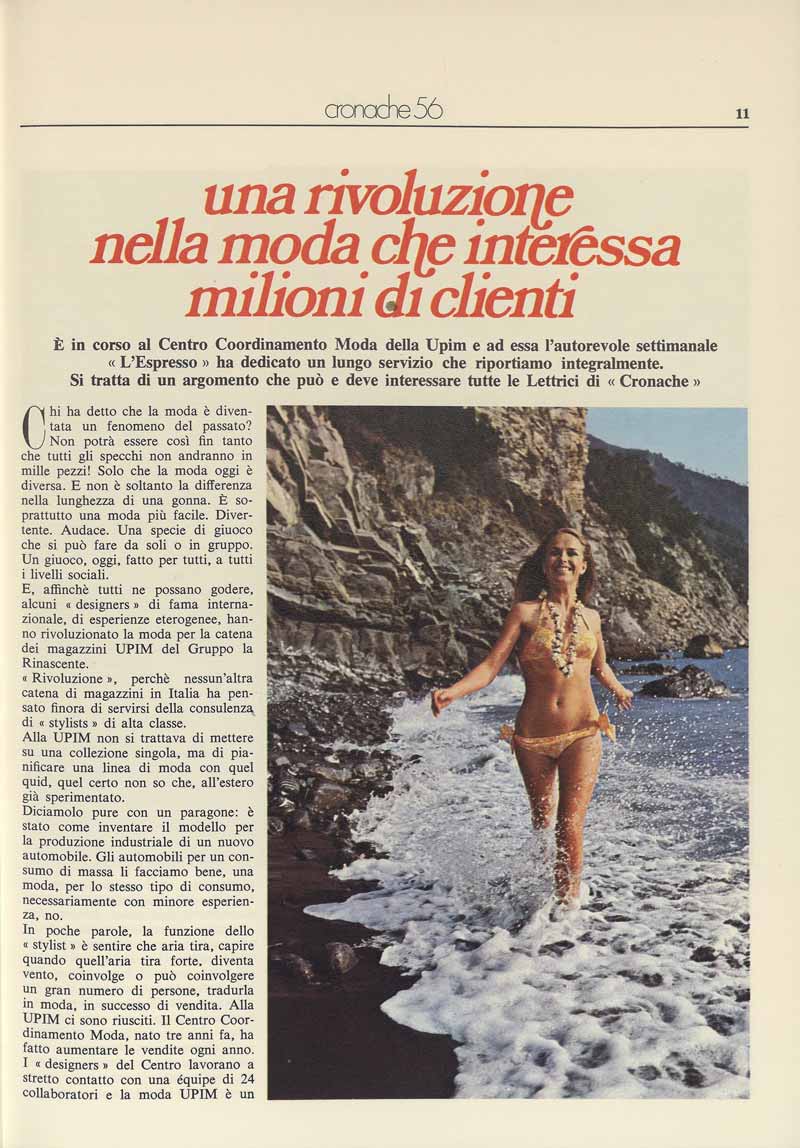
41 — Maria Adele Teodori, Una rivoluzione nella moda che interessa milioni di clienti, in “Cronache gruppo la Rinascente”, n. 56, 1970.
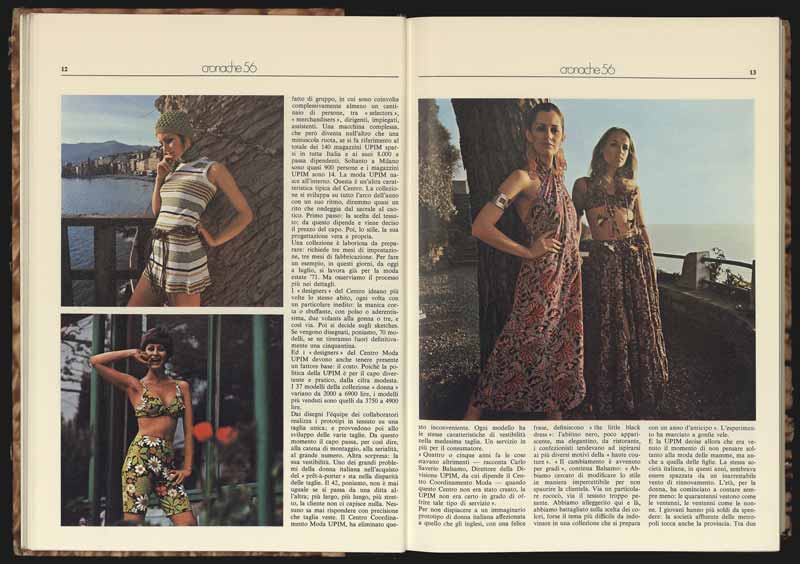

42/43 — Maria Adele Teodori, Una rivoluzione nella moda che interessa milioni di clienti, in “Cronache gruppo la Rinascente”, n. 56, 1970.
Nel settembre del 1967 un numero speciale dell’House Organ celebra i cinquant’anni dell’azienda, ne ripercorre puntualmente la storia, ne descrive il presente e ne anticipa le strategie future.
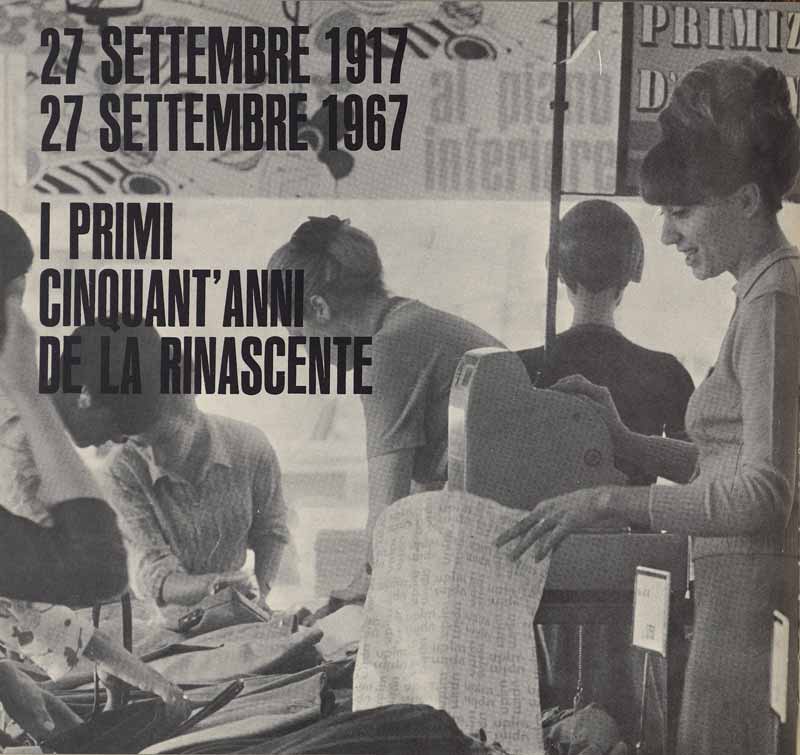
44 — “Cronache la Rinascente-Upim”, a. XX, n. 42, 1967
In September 1967, a special House Organ issue commemorated 50 years of the company, tracing la Rinascente’s history in detail, giving a panorama of its current situation, and revealing its future strategies. In 1968, the work was released by the Public Relations Service in three volumes, called la Rinascente: cinquant’anni di vita italiana (la Rinascente: Fifty years of Italian life), and its meticulously-crafted and sophisticated aesthetic was created by Roberto Sambonet and Max Huber, who collaborated with a number of famous photographers, including Aldo Ballo, René Burri, Arno Hammacher, Serge Libis, Ugo Mulas and Leonard Zubler. Bruno Caizzi traced the history of the company in the widest context possible: the evolution of the retail industry in the modern age.
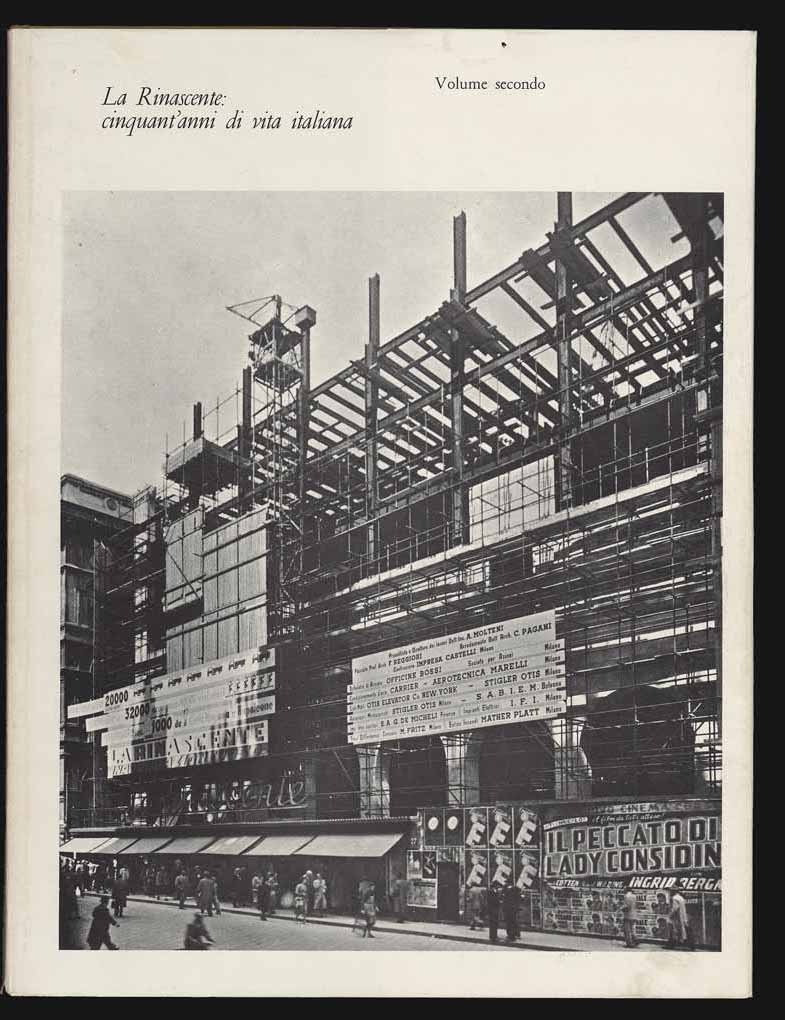
45 — La Rinascente. Cinquant’anni di vita italiana, volume II, 1968

46 — La Rinascente. Cinquant’anni di vita italiana, volume III, 1968
The company continued to engage in self-reflection in the following year, with a survey published in September 1969 in the “Cronache”, that examined the company magazine and provided a detailed profile of the male and female readers of the magazine: “Our company’s employees read: they are modern men and women, integrated into a modern society, and they are aware of their own problems and of those in the world surrounding them”.
In 1970, issue number 58 was included with a highly interesting and visually impactful booklet, that detailed the group’s mission and history, the strategies implemented by top management, the part played by employees, and the central role of the customer in a succinct and effective manner.

47 — “Cronache gruppo la Rinascente”, a. XXIII, n. 56, 1970
In the backdrop of a rapidly changing society, rocked by severe class tensions, la Rinascente’s ownership, whose management of relations between top management and employees had always been characterized by a strong sense of paternalism, transferred its shares to IFI, a holding company owned by the Agnelli family, and to Mediobanca. It marked the end of an era, as well as the end of “Cronache”, which ceased publication in 1973, after the release of an issue completely dedicated to the opening of a new la Rinascente store in Turin.
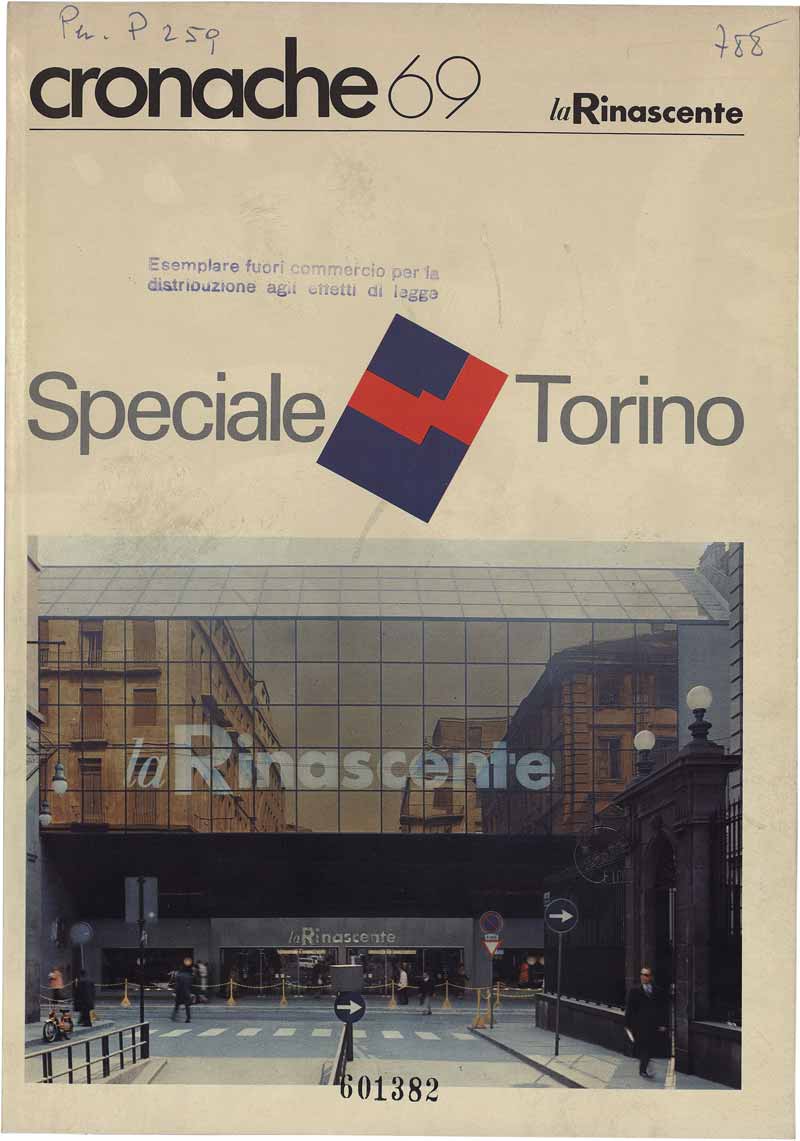
48 — “Cronache la Rinascente”, a. XXVI, n. 69, 1973